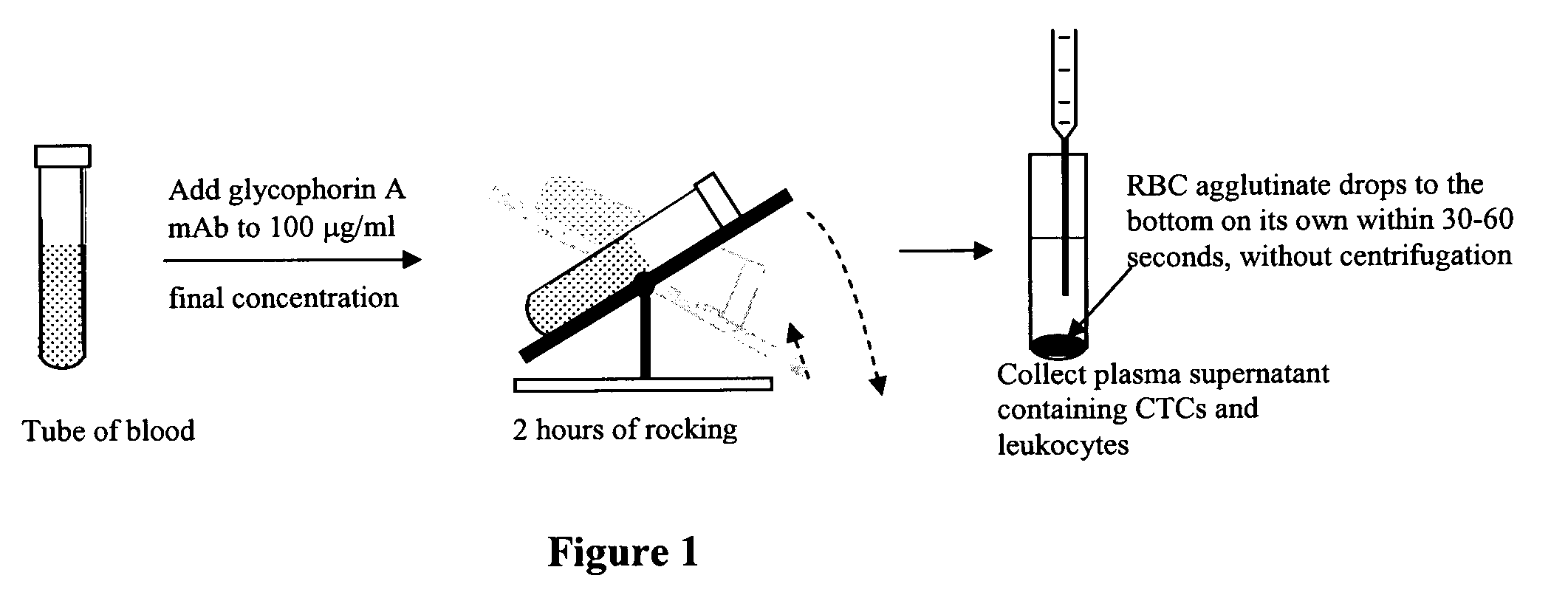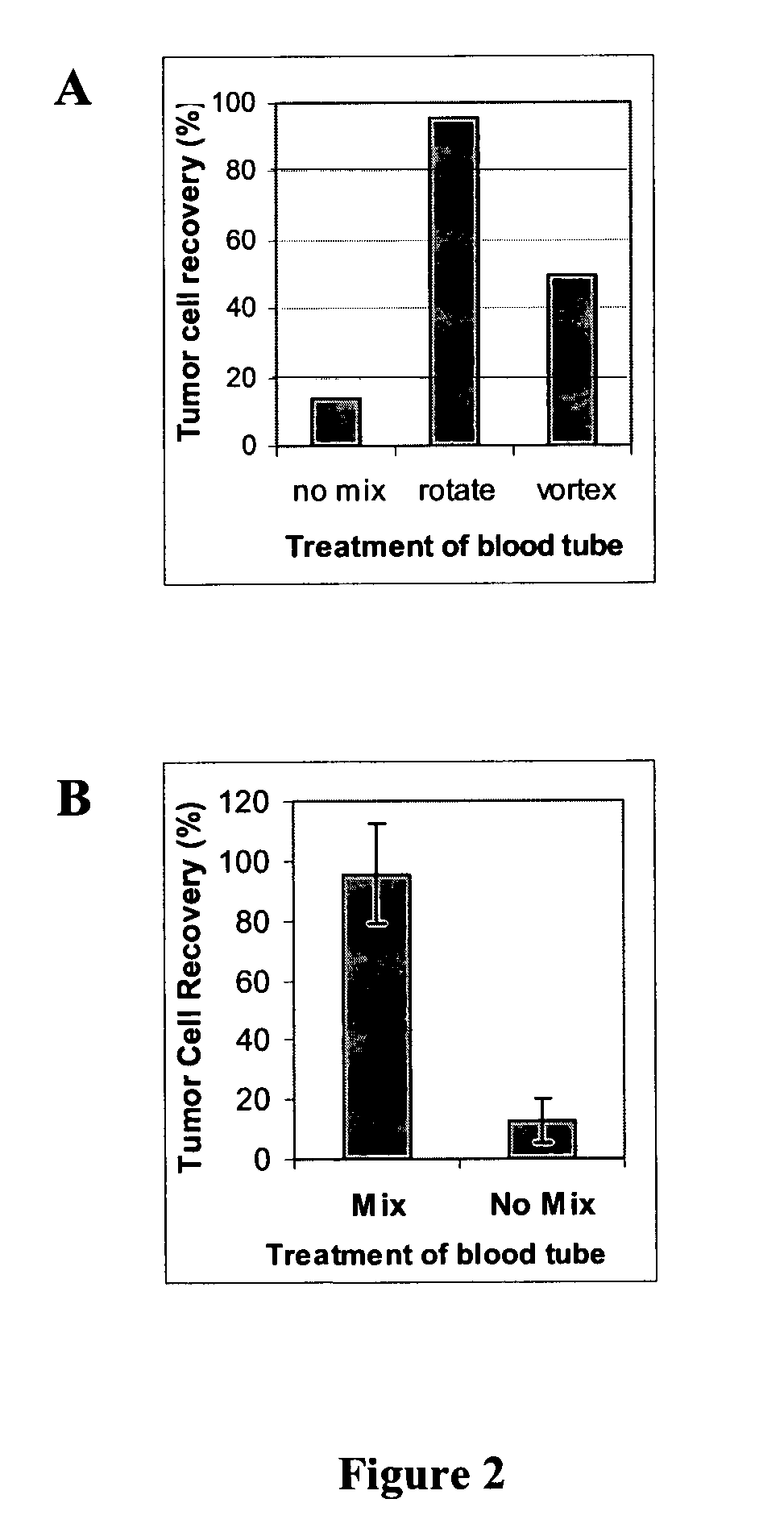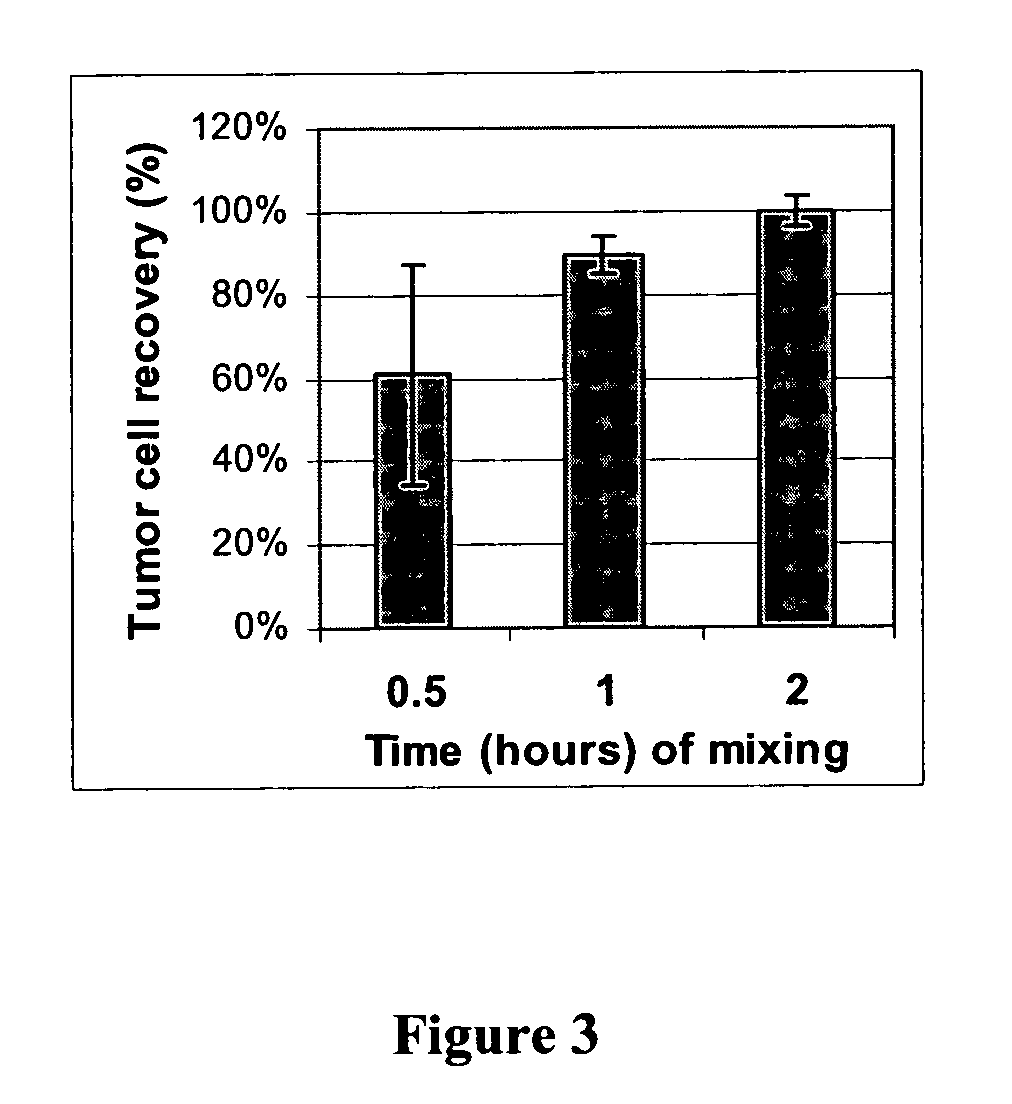Method for enriching rare cell subpopulations from blood
a rare cell and blood technology, applied in the field of rare cell enrichment, can solve the problems of difficult to detect rare ctcs, and insufficient cell yield of current recovery methods, so as to increase the cellular recovery of non-erythrocytes, the effect of high sensitive and reproducibl
- Summary
- Abstract
- Description
- Claims
- Application Information
AI Technical Summary
Benefits of technology
Problems solved by technology
Method used
Image
Examples
examples
[0062]FIG. 2 illustrates the difference that mixing can make in tumor cell recoveries using blood specimens spiked with ZR-75-1 (breast carcinoma) tumor cells. Two separate experiments are shown (A and B). In the former (A), the tubes were either not mixed at all (“no mix”), mixed constantly on a rotator (“rotate”), or intermittently mixed on a vortex mixer (“vortex”). For the second experiment (B), the intermittent vortex mixing was not re-tested. The mixed group in experiment B used constant mixing on a tumbling shaker, whose motion is illustrated in the middle of FIG. 1. The vertical bar at left (experiment B) depicts tumor cell recovery with mixing (after adding the anti-glycophorin antibody). The right-hand bar demonstrates the tumor cell recovery for tubes left standing on the bench top during erythrocyte agglutination.
[0063]In these experiments, pathologic discard blood samples were procured from the Boston University Medical Center clinical laboratory, with approval and unde...
PUM
 Login to View More
Login to View More Abstract
Description
Claims
Application Information
 Login to View More
Login to View More - R&D
- Intellectual Property
- Life Sciences
- Materials
- Tech Scout
- Unparalleled Data Quality
- Higher Quality Content
- 60% Fewer Hallucinations
Browse by: Latest US Patents, China's latest patents, Technical Efficacy Thesaurus, Application Domain, Technology Topic, Popular Technical Reports.
© 2025 PatSnap. All rights reserved.Legal|Privacy policy|Modern Slavery Act Transparency Statement|Sitemap|About US| Contact US: help@patsnap.com



